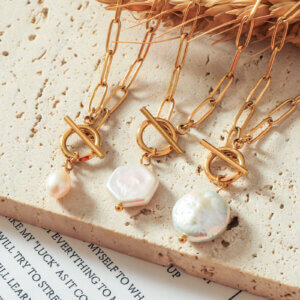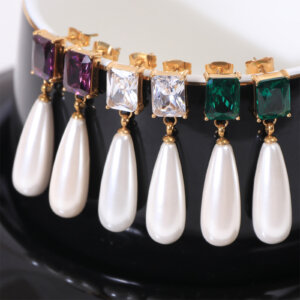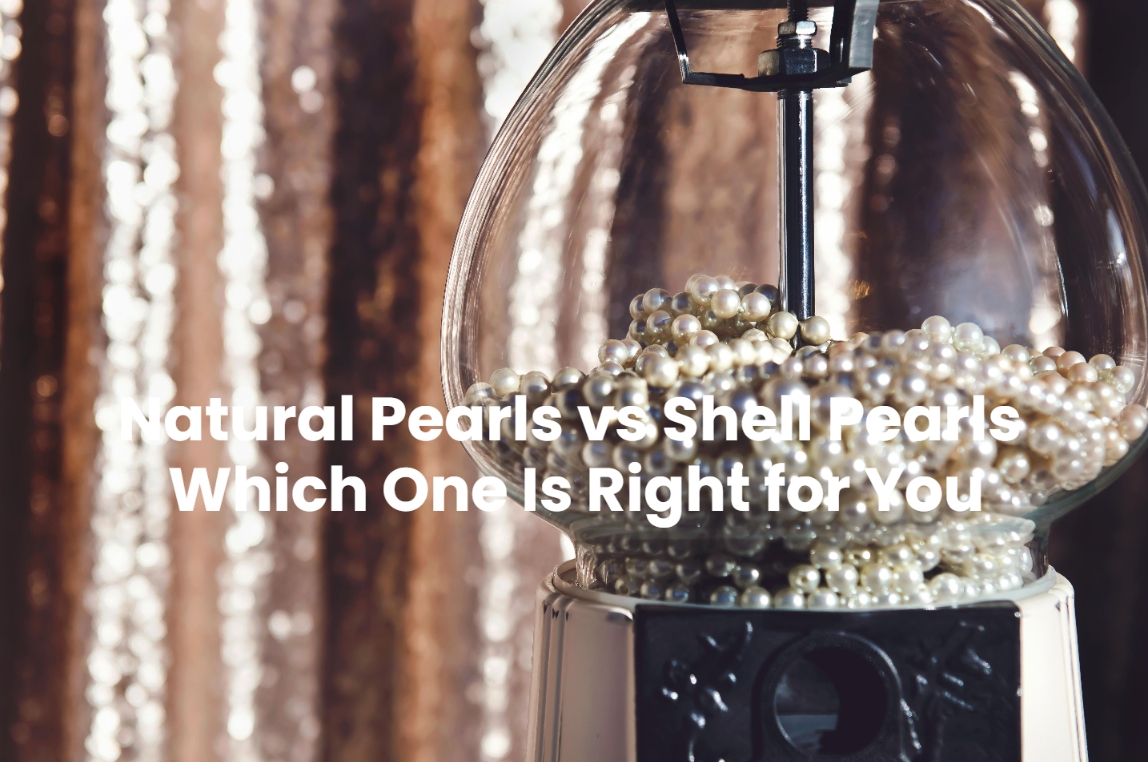When it comes to pearls, whether natural or synthetic, they both offer unique beauty and charm in jewelry. However, understanding the differences between real pearls and shell pearls can help you make an informed decision when choosing jewelry. In this article, we’ll explore the key distinctions, pricing, and common uses of these two types of pearls, as well as what makes each one special.
Definition of Pearls and Shell Pearls
Pearls are a type of natural organic gem, typically found inside the soft-bodied marine creatures like pearl oysters and mother-of-pearl shells. Pearls are formed when an irritant, such as a grain of sand, enters the shell of a mollusk, and the mollusk secretes layers of nacre (a combination of calcium carbonate and protein) around the irritant. Over time, this process results in the formation of a pearl.
Shell pearls are artificial or synthetic pearls created from a variety of materials, primarily shell powder or natural shell, which is polished and shaped to resemble a pearl. These pearls are considered a substitute for real pearls and offer a more affordable option for jewelry makers and consumers.
Key Differences Between Pearls and Shell Pearls

- Formation: Pearls are naturally formed by mollusks over a long period of time, while shell pearls are man-made.
- Composition: The main components of a real pearl are calcium carbonate and protein, while shell pearls are made from powdered shell or synthetic resin.
- Luster: Pearls have a soft, warm luster that appears to emanate from within, while shell pearls tend to have a brighter, more artificial sheen.
- Shape and Size: Real pearls vary greatly in shape and size, making each one unique, while shell pearls are more uniform in shape and size.
- Weight: Pearls are denser and heavier than shell pearls of the same size.
Price Comparison
Real Pearls: The price of pearls varies greatly depending on their type, size, and quality. High-quality cultured pearls such as South Sea pearls or Akoya pearl earrings can be quite expensive and are often used in luxury jewelry. Natural pearls, which are rarer, command even higher prices. For instance, Tahitian pearl necklaces and cultured pearl rings are considered high-end, making them ideal for special occasions or as investment pieces.
Shell Pearls: Shell pearls are much more affordable than their natural counterparts. Since they are manufactured and not harvested from mollusks, they offer a cost-effective alternative for fashion jewelry. The cost of shell pearl necklaces or synthetic pearl bracelets is significantly lower, making them a popular choice for mass-market fashion jewelry.
Which One Is Commonly Used in Fashion Jewelry?

In fashion jewelry, shell pearls are more commonly used due to their lower cost and the ease with which they can be manufactured in various shapes and sizes. These synthetic pearls are widely used in the creation of pearl jewelry sets, pearl strand necklaces, and pearl bracelet wholesale collections. They’re especially popular among younger consumers looking for stylish yet affordable jewelry options.
Shell pearls also pair well with a variety of materials, including gold-plated pearls, silver pearl earrings, and custom pearl jewelry pieces. These combinations provide a modern, fashionable look without the high price tag of real pearls.
Common Materials Used with Shell Pearls
Stainless Steel: Stainless steel is a durable and affordable material often used to create jewelry that features shell pearls. Shell pearl necklaces and shell pearl earrings are frequently crafted with stainless steel chains or settings to offer both strength and style.
Copper: Copper is another material that pairs well with shell pearls due to its affordability and ease of customization. It is often used in the production of shell pearl jewelry and pearl jewelry wholesale collections.
Silver: Silver, particularly sterling silver, is widely used to create more refined jewelry pieces that incorporate shell pearls. The combination of silver and shell pearls results in sophisticated yet affordable pieces that can be worn for both casual and formal occasions.
Conclusion
In summary, natural pearls like Freshwater pearl jewelry, Akoya pearl earrings, and Baroque pearl pendants are prized for their rarity, beauty, and high cost, often reserved for luxury pieces. On the other hand, shell pearls offer an affordable alternative that mimics the beauty of natural pearls. Shell pearls are commonly used in pearl shell jewelry, synthetic pearl bracelets, and other pearl jewelry sets in the fashion industry. Whether you choose gold-plated pearls or silver pearl earrings, shell pearls provide a versatile and stylish option at a fraction of the cost.




